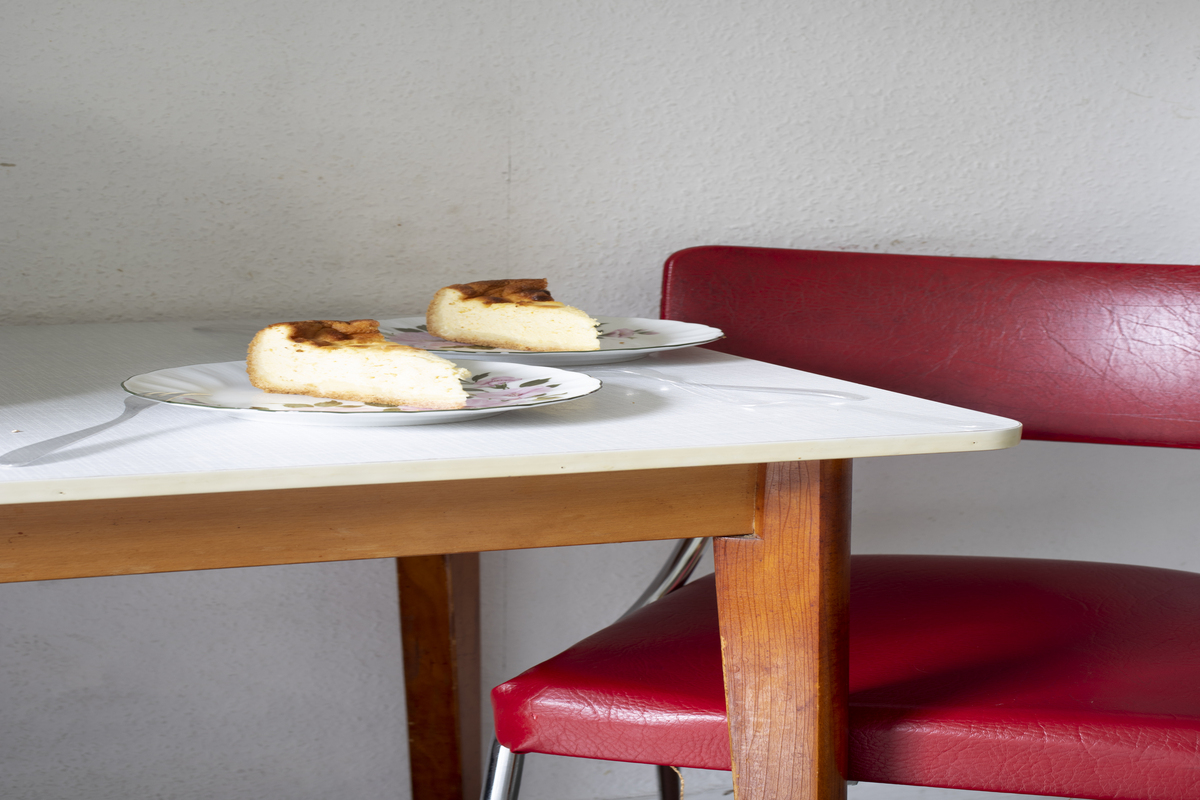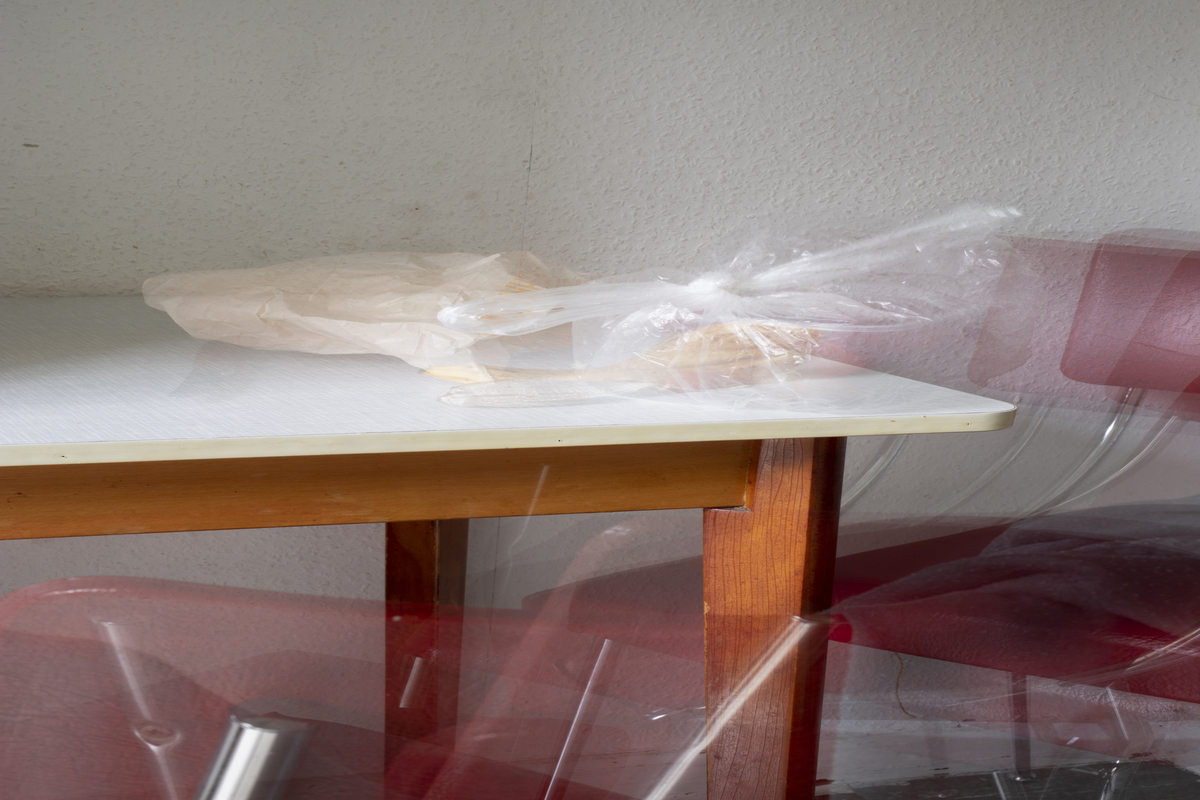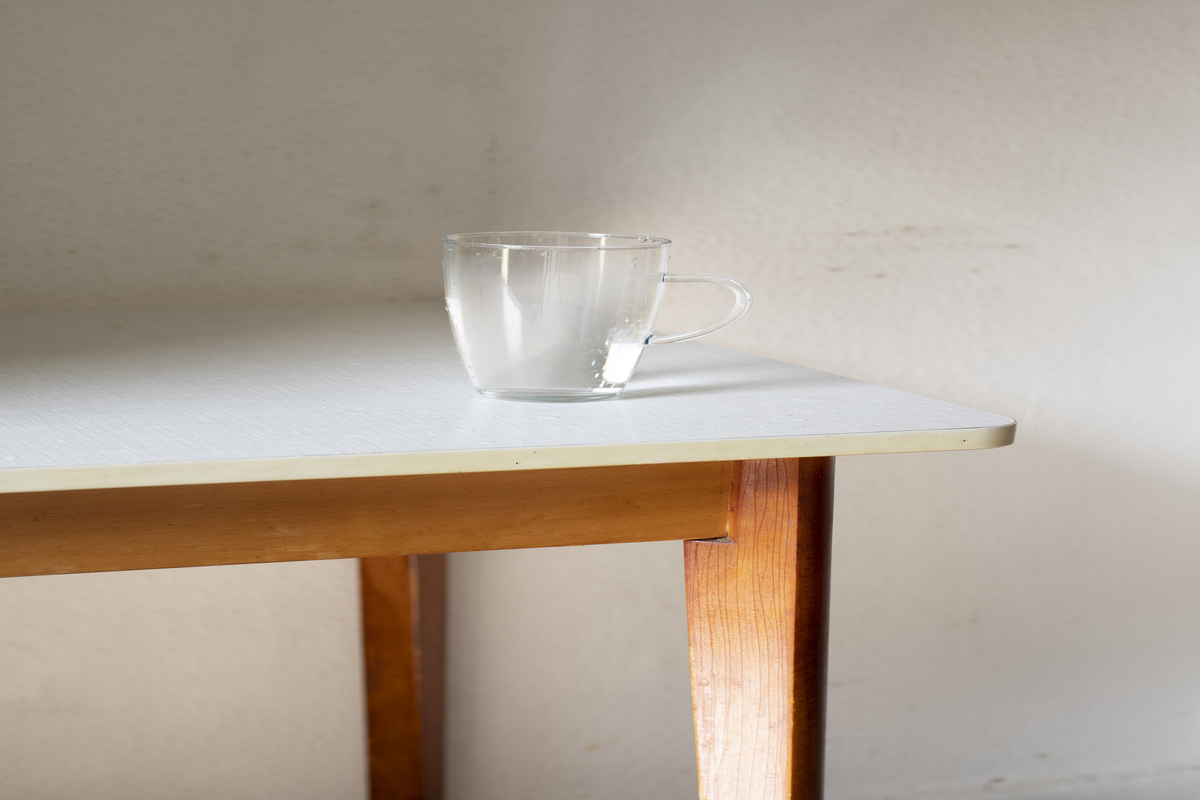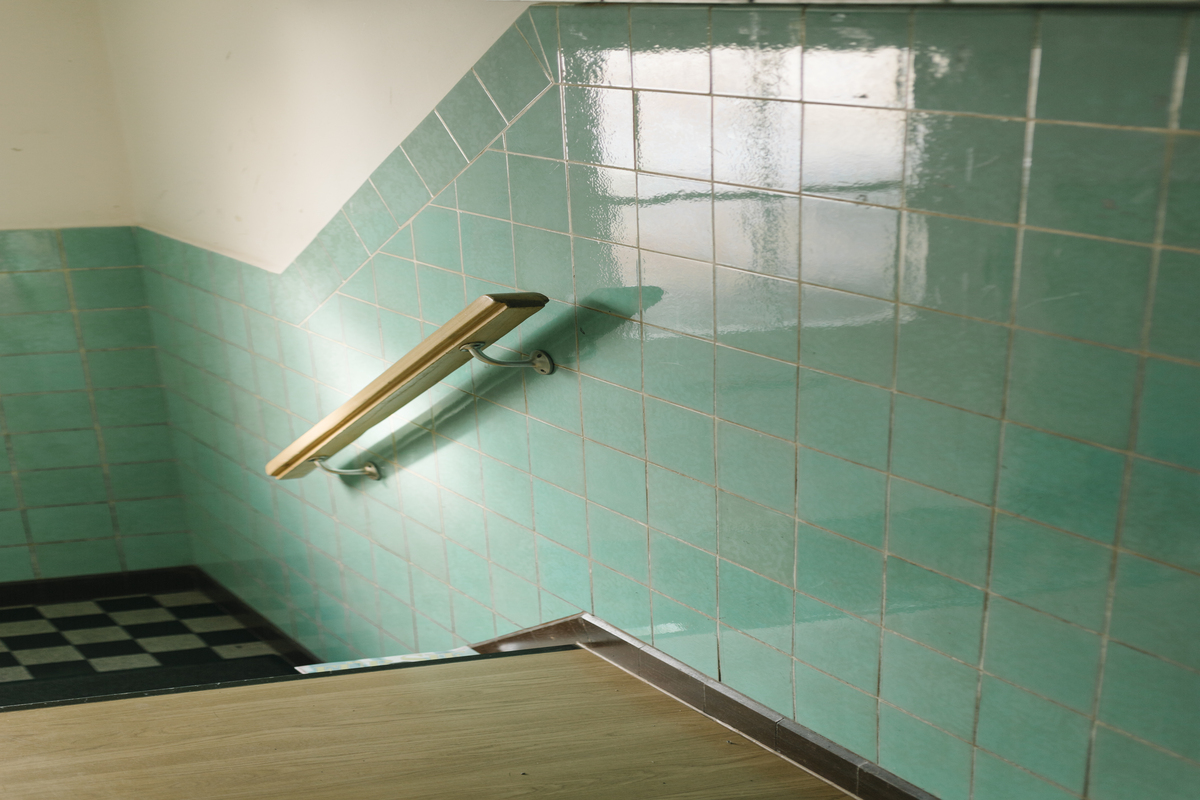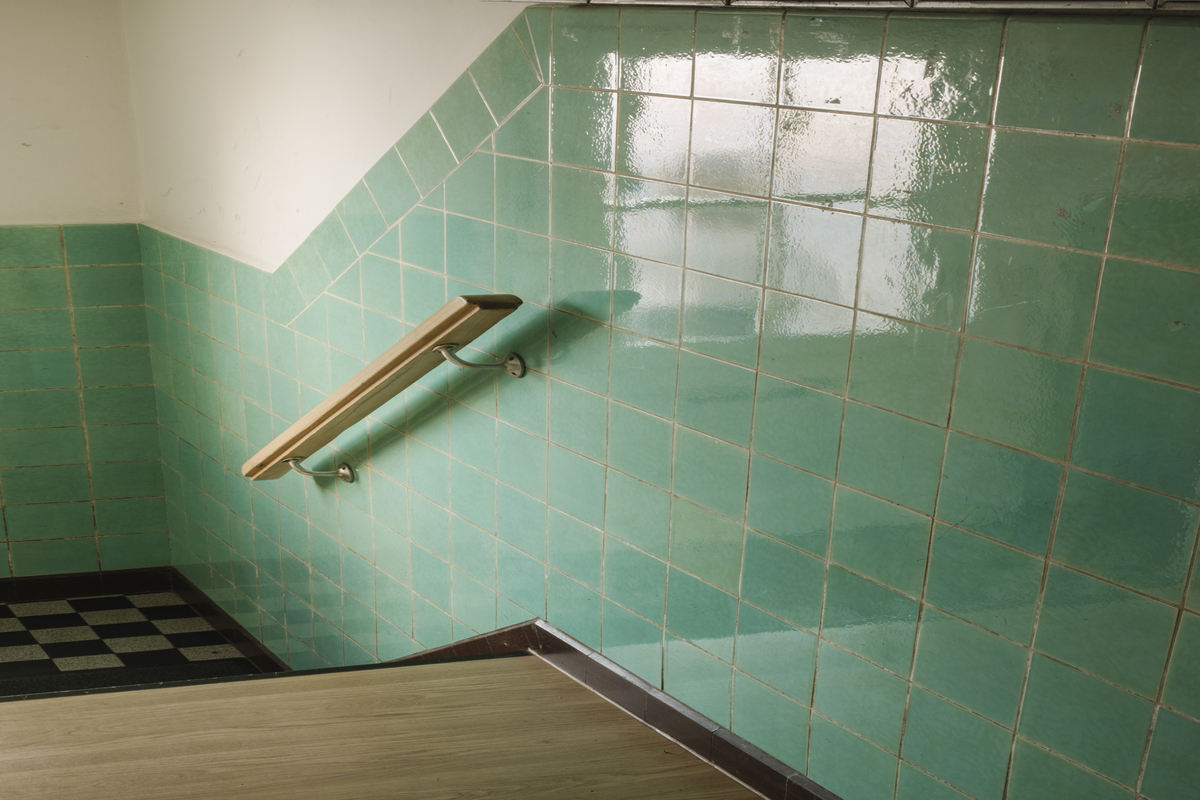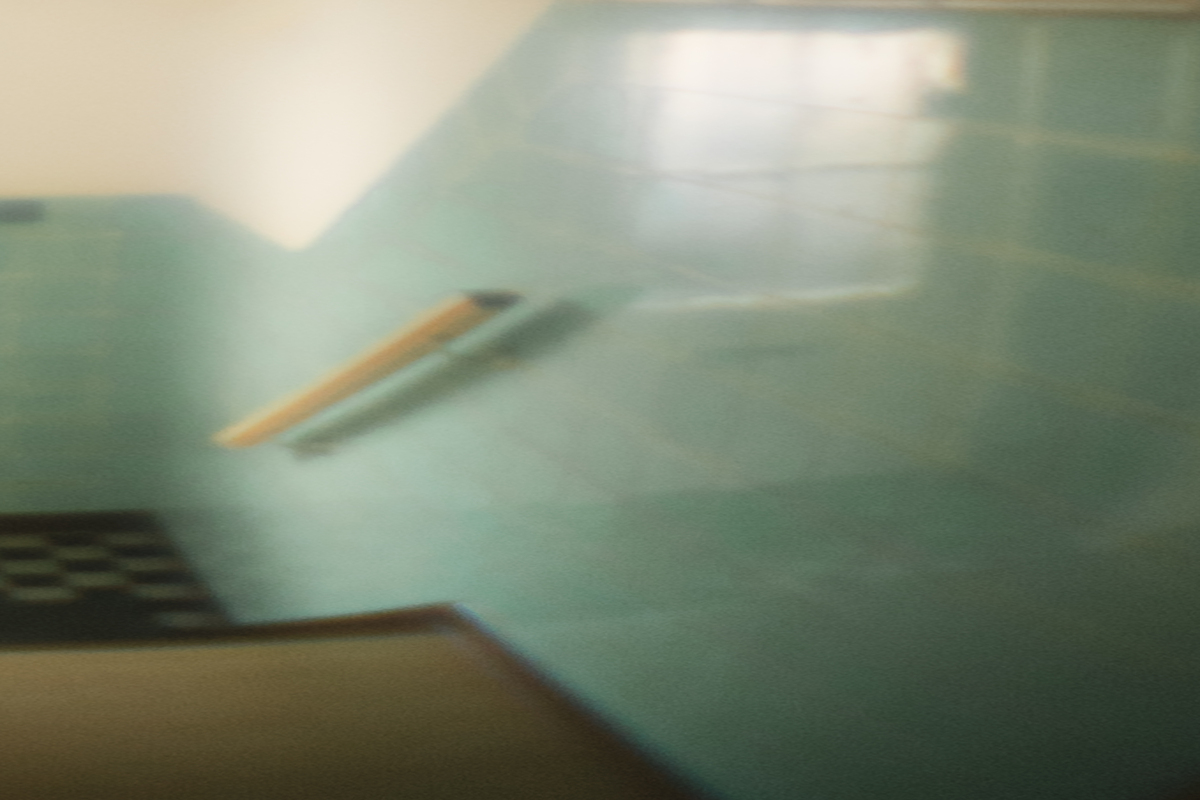Photography As An Archiving Process — On ‘Aller Tage Anfang’ by Ana Rodriguez
Written by Famkje Elgersma. Published on 22 December 2022.
I like that flow of life, moment after moment … and although there is no still stand, photography allows us to capture moments, to freeze them, and to collect them like marbles. In photographs, moments are captured so that they can be reviewed, compared, and reflected upon. I am going to meet Ana; She is an artist working with photography. I will talk with her about the photographic documentation of daily processes, of images that provide evidence of the existence of the past moments, about archiving processing, about the archive as a witness of time, and about the esthetics of time.
Ana is based in Bremen, Germany, where I live, too. She is studying at the University of the Arts with a focus on photography. She opens the door. Although I have never been to her flat before, the surroundings feel familiar, I know these kinds of stairways, I have seen them before, … many times, and from different perspectives.
“My photos reflect my point of view,” Ana starts the conversation, “and at the same time photography allows me to discover new places, to dive into worlds I would have never see without a camera.” That resonates with me. I’d like to think of the camera as a world-discovery device. And I like how Ana embarks into new worlds. Her images also open my eyes and planting a past, a memory of a place I have never entered. Who knows? I might have never noticed the wooden banister, the turquoise-tiled wall, or the tiled floor otherwise. So here I am, standing in this stairwell, thinking to myself, isn’t it amazing what pictures can do?
“I would say, I find it the easiest to express myself with pictures. They allow me to express moods and emotions which are difficult to describe.” Exactly, I think. That is exactly what I try with words. When I write, I not only try to tell a story but to share a situation, a setup of emotions, impressions, and wandering thoughts. The narrative is important, but the emotions are the framework, they must start to flow. This coins my way of beholding: Looking at a photo, I search for the emotional sphere first, and only later I start questioning and asking for the narrative. In this case, I find it quite fascinating how photographers decide on the motifs and moods they capture to tell something through images.
“I think that’s a beautiful term, capturing something in photos. That’s what my photography is very much about, documenting, capturing the here and now, trying to find reality in a way. Basically, I capture situations that I encounter in everyday life, things that catch my eye, that have a connection to me. Yet, for me a photo is not just a study of form, it should combine content, emotion, and esthetics, tell a story, and trigger something beyond complaisance.” Are we still in the stairway? I grab the railing and follow Ana, up the steps, into her apartment. For a short moment, my thoughts look back. When exactly did she close the door? I am excited and realize that I often fade out daily routines from conscious notice.
“While I was photographing ‘Aller Tage Anfang’ (en: At the Beginning Of All Days),” Ana recalls, “it was the beginning of the Covid-19 pandemic, and due to the contact restrictions, my home environment became the stage of my life. I started to review my surroundings and observed what was changing every day. I found myself beholding colors and shapes and explored the way the light fell beautifully into the house at certain times of the day. At about 9:30 am the light in the bathroom was good, then at 3:00 pm the staircase was illuminated beautifully, and in the afternoon, when the sun had wandered a bit further, the elderberry bush in front of the house was in a light in which I was able to capture it properly. Basically, I chose subjects that appealed to me esthetically, to be able to keep looking at them from the same angle all day.“
We are walking through the apartment, along the hallway, past the bathroom, through the kitchen, to the balcony, where I take place on a small bench. I try to be aware of my surroundings. Ana brings two glasses of water and starts to talk about her processing. “I was photographing five different places, during the same times every day, sometimes with an exposure time of up to four hours. The photos dictated my daily structure; I adjusted appointments and hobbies. All this scheduling, of course, required me to spend 24/7 at home. In a way, it was crazy. That came with a lot of sacrifices.” I find the idea of having to plan my life so strictly and being so dependent on one thing very exhausting. And as if she could have heard me, she continues: “Perhaps it would have even gained in value if I had kept it up for more than a month. However, at some point the work put me under an extreme amount of strain; it captured me and determined my life. … And honestly, I don’t miss working on ‘Alle Tage Anfang’, and although the work provided me with a structure which helped me cope with those times of uncertainty.” For a moment we sit in silence; each of us drinking some water.
She picks up the conversation and starts to talk about the motifs of the photographic series: “The main motifs, the staircase, the dining table, and the elderberry bush have given me orientation, like a structured daily routine. I started to see all the small changes that are not really important, but I can see them while comparing the set of images.” The way Ana talks, soft, slow and seemingly accompanied by a stream of thoughts, allows me to follow her meticulously into the atmosphere of those past days and it seems to me as if we had shared those moments.
She adds, “… by capturing and documenting my surroundings, I described a part of myself”. I remind myself that we are talking about a staircase, a dining table, and an elderberry bush and it becomes a bit difficult to follow Ana in her flow of thoughts. “This, of course, influenced me behind the camera and makes the work very personal and intimate, although I have not selected intimate motifs. I could have photographed my bed or something similar. Yet it is my everyday life I document. Basically, I’ve artificially created an everyday life for myself through the work – which is a bit contradictory; I’ve created an everyday life through photographing my everyday life.” I start to drift a bit: Isn’t it already artificial to experience the same thing every day? I try to imagine what would happen if I repeated this visit to Ana, in the same way, every day. How long would it take until we would try to avoid repetition so we wouldn’t get tired of the situation?
Again, Ana answers my thoughts: “In fact, at some point I got bored. After the 30th or so repetition, something had to happen, which gave rise to the impulse to stage things. I started to intervene in a situation or even to create one. This interplay between staging and documenting was a very interesting experience for me.” She smiles when standing up and her gaze wandering out into the courtyard. “It just occurred to me now: At what point is it documentary and is it still documentary when I’ve intervened? After all, it continues to be my everyday life and the photos do become my everyday life!”
I am looking at my glass. It is full. Haven’t I already drunk it empty? Ana’s series of images makes me think about how much I don’t notice and overlook. Both of us are beholding the photographs. She points out the small changes that would have been unnoticed if they had not been documented. As in a seemingly congruent troubleshooting image, the moments become unique and dissolve the routines of every day. The photo, the series, the repetition … I ask myself if this situation had repeated itself before. But, if this is the first time I consciously perceive it, would I be aware of the previous times?
I check on Ana, she is sitting next to me, also with a filled glass. How long I have been here, I don’t know. She grabs her glass and takes a sip and continues to talk. “I was concerned with everyday life, with the passing of time, with repetition. So, it was logical to treat the subject photographically, and not just because I come from a photography background. Photography as a medium can reflect time incredibly well.” She seems to be so sure, but I am back to basic reflections: How can I capture time? How does the passage of time become visible in a still image?
She puts her glass down and explains: “The image with the glass cup I exposed for about 10 minutes. I walked back and forth, slowly filling the glass cup with water. Although a lot happened during this period, only this cup is visible in the photo, filled with a kind of mist. I played with this interplay of making time visible and invisible.” I am amazed and find it magical to have the possibility of the overlays of time frames being condensed in one image. With the long-time exposure, the traces of times are collected and blend into each other, creating something new while I am only able to perceive moment after moment. Or do we have something in our system that works in a similar way? Collecting, layering, blending … something is resonating with me, I am just not sure what.
“What is a particularly pleasant moment for me is to finally get to see the images after they had been invisible in the black box of the camera for hours, almost like in an analog lab.” Again, she talks about patience, pattern, and repetition, about series and echoes. I am a bit puzzled when I hear her talking about consistency and quality. “… it is important to look at the images as a series.” I am frazzled, what has been said and what is new, and does that matter? Ana opens the door. The surroundings do not feel unfamiliar. I know this stairwell from another time, from another perspective.
REFERENCE
Interview with Ana Rodriguez. 9 September 2021. The interview was conducted via voice messages and subsequently embedded in the fictional framework of the story.
LINK
anarodriguez.de

